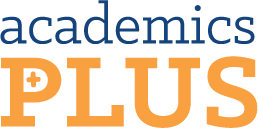Children with dyslexia, despite displaying intellectual ability in other areas and having received appropriate education, often have difficulties with reading, writing and spelling. The June 2010 issue of Elsevier’s Cortex contains findings from Vanderbilt University, Johns Hopkins University and Kennedy Krieger Institute researchers that suggest “a connection between difficulties with written language and structural differences in the brain” (Rimrodt, Peterson, Denckla, Kaufmann, & Cutting, 2010).
The brain contains white matter. This white matter consists of bundles of fiber that are essentially the wiring that allows brain cells to communicate. The brain’s left-hemisphere language network is made up of bundles of these fibers, which contain branches that extend from the back of the brain to the front parts, which are responsible for articulation and speech. In individuals with dyslexia, there is a structural difference in a very important bundle of fibers in the left-hemisphere language network.Using diffusion tensor imaging (DTI), researchers traced the course of this bundle in its network and “discovered that it ran through a frontal brain region known to be less well organized in the dyslexic brain.” Additionally, they found that “fibers in that frontal part of the tract were oriented differently in dyslexia,” substantiating that dyslexia is directly related to structural abnormalities in the brain (Rimrodt et al., 2010).
One of the study’s researchers, Laurie Cutting (2010), of Vanderbilt University, stated, “If you have decreased integrity of white matter, the front and back part of your brain are not talking to one another. This would affect reading, because you need both to act as a cohesive unit.”
Academics Plus uses a program called Brainjogging which helps regions of the brain talk to each other and act as a cohesive unit. Our programs encourage communication between brain regions, thereby better enabling the circuitry involved in many tasks, including reading, writing and spelling. In our sessions at Academics Plus, each activity is designed to synchronize cognitive processes in order to help boost all around cognitive and academic success.
Sheryl L. Rimrodt, Daniel J. Peterson, Martha B. Denckla, Walter E. Kaufmann, Laurie E. Cutting. White matter microstructural differences linked to left perisylvian language network in children with dyslexia. Cortex, 2010; 46 (6): 739 DOI: 10.1016/j.cortex.2009.07.00
